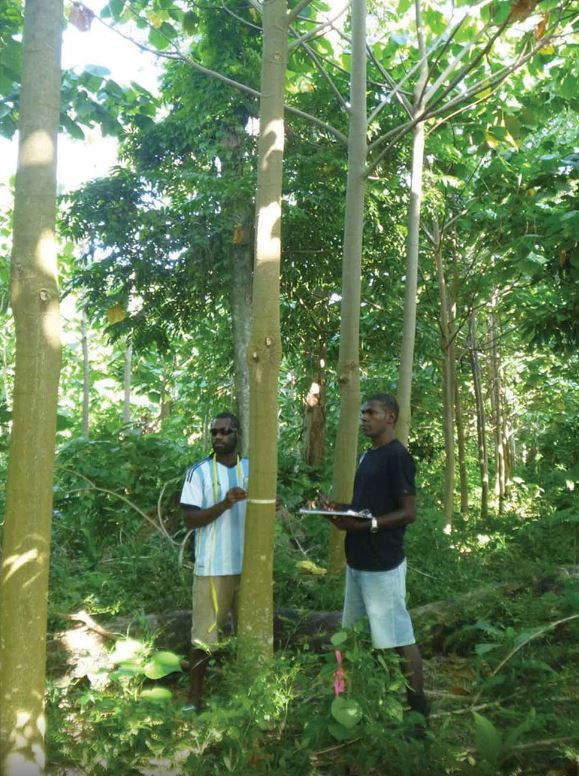Improving and conserving whitewood in Vanuatu

Whitewood is a native tree in Vanuatu, and has long been valued for its timber. This has resulted in overharvesting, and the numbers of whitewood trees have dwindled on the islands. This has also meant a corresponding loss of genetic diversity in Vanuatu whitewood, which is important for the survival and health of any plant or animal species.
With support from ACIAR and technical assistance from Australian forestry researchers, the Government of Vanuatu has been collecting the best of the remaining genetic resources, and has established a whitewood breeding program. Whitewood is easy for farmers to grow, and the program is supplying them with high-quality seedlings. The eventual aim is to develop sustainable plantations and woodlots that allow people to continue to grow and use whitewood, while ensuring the trees maintain useful traits, such as fast growth and good shape and wood density.
The program began with the collection of seeds from 110 trees from six islands, which were planted as a seed orchard in the late 1990s. Eleven years later, the young trees were beginning to show their characteristics, and the trees originating from different islands showed variations in growth and form. This was a promising finding, and supported the breeding program strategy, as this variation could now be maximised through breeding.
The next step was to see whether trees with good characteristics could be identified at a younger age, to help speed up the breeding program. The current paper reports the results from an experiment on this subject. The research team included scientists from the University of the Sunshine Coast, the Commonwealth Scientific and Industrial Research Organisation (CSIRO) and the Vanuatu Department of Forests. They took measurements from second-generation trees (offspring of the seed orchard trees) at 2 and 3 years of age, and found further encouraging results – the different tree families again showed distinctive characteristics, even at this young age. The paper concludes with a discussion on the need for both genetic improvement, that is, selecting for favourable growth and form characteristics, and also conservation of Vanuatu whitewood by bringing in new trees from different families, and maintaining a gene bank.
The open-source publication of the above paper is part of wider initiative by ACIAR to disseminate the results of its projects as widely as possible. The move towards supporting open access is in line with ACIAR’s thinking on free and fair knowledge sharing in pursuit of more productive and sustainable agricultural systems.


